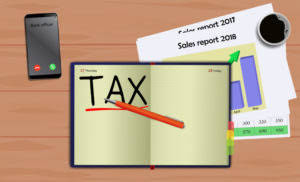
Close


Accountants use contra accounts rather than reduce the value of the original account directly to keep financial accounting records clean. If a contra account is not used, it can be difficult to determine historical costs, which can make tax preparation more difficult and time-consuming. Bad Debt Expense increases (debit), and Allowance for Doubtful Accounts increases (credit) for $48,727.50 ($324,850 × 15%).

The allowance for doubtful accounts is a contra-asset account that reduces the total accounts receivable reported on the balance sheet. This adjustment is necessary to reflect the realistic collectible amount, ensuring that the financial statements are not overly optimistic. The process begins with identifying the accounts that are likely to become uncollectible.
That journal entry assumed a zero balance in Allowance for Doubtful Accounts from the prior period. This journal entry takes into account a debit balance of $20,000 and adds the prior period’s balance to the estimated balance of $58,097 in the current period. The final point relates to companies with very little exposure to the possibility of bad debts, typically, entities that rarely offer credit to its customers. Assuming that credit is not a significant component of its sales, these sellers can also use the direct write-off method. The companies that qualify for this exemption, however, are typically small and not major participants in the credit market.

If the asset account had a credit balance or the contra asset account had a debit balance, this would indicate an error in the journal entries. Using the example above, let’s say that a company reports an accounts receivable debit balance of $1,000,000 on June 30. The company anticipates that some customers the allowance for doubtful accounts is a contra asset account that equals: will not be able to pay the full amount and estimates that $50,000 will not be converted to cash. Additionally, the allowance for doubtful accounts in June starts with a balance of zero. Contra assets are still recorded along with other assets, though their natural balance is opposite of assets.

Once this account is identified as uncollectible, the company will record a reduction to the customer’s accounts receivable and an increase to bad debt expense for the exact amount uncollectible. The allowance for doubtful accounts ensures that the financial statements are prudent, by reflecting management’s expectations – not just contractual amounts – in the balance sheet. It, therefore, helps analysts make better predictions of the cash flows the company expects to receive from customers. Let’s say your business brought in $60,000 worth of sales during the accounting period. Based on historical trends, you predict that 2% of your sales from the period will be bad debts ($60,000 X 0.02). Debit your Bad Debts Expense account $1,200 and credit your Allowance for Doubtful Accounts $1,200 for the estimated default payments.
While businesses expect their customers to pay for the goods and services they provide, some will not be able to partially or fully pay their dues. This can happen for many reasons, including bankruptcy or financial difficulties, and it leads to uncollectible accounts. Doubtful accounts are considered contra assets because they reduce the account receivables amount.

Hotel Korsal
Šetalište Frana Kršinića 80
20260 Korčula, Hrvatska


Telefon: +385 20 715 722
E-mail: info@hotel-korsal.com